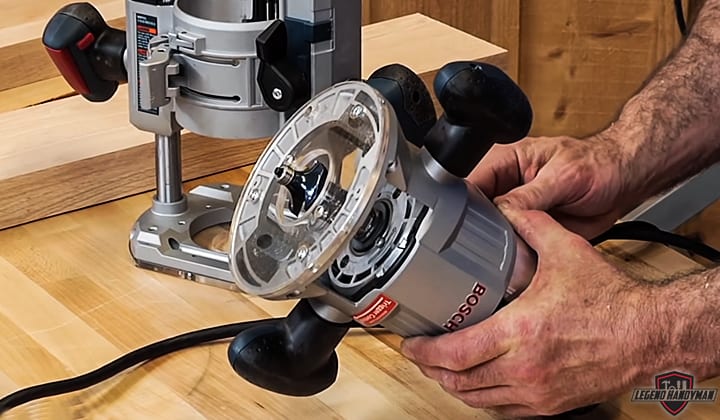Woodworking requires lots of skills and patience, there’s no doubt about that. But your skill and time won’t be much of help if you lack appropriate machinery. Routers are one of the most important and versatile tools in woodworking. Though the job of a router is to do intricate carvings in wood, it does more than that.
The routers are either fixed or plunge type and there are a lot of people who think the two routers are the same. In this article, we will tell you why and how they are wrong and illustrate the basic differences between the fixed base and plunge routers.
Hopefully, we will be able to help you conclude which one to buy for your next DIY work.

Fixed-base Routers
The base of the fixed routers is constant, as you have already guessed by the name. Fixed base routers are very popular among the new users as it doesn’t require so much adjusting, to begin with. Just place the router in your workplace and it is completely set.
The router bit is in a constant position, so you can move the wood the way you want. This is the reason the fixed routers provide more precise carvings than the plunge routers. Also, you won’t have to worry about a maneuverable cutting base. It can also be incredibly simple to use if you decide to mount it to a router table (these are great for that!) to create unique and intricate designs.
Plunge Routers
Unlike the fixed base routers, the plunge routers have a movable base to adjust the position and depth of the bit. Plunge routers have two arms on them with one on each side of the router. This allows you to manually plunge into the wood to begin cutting the material. Simply put, the cutting part of the router can be driven into the wood using your own force to begin the cutting.
The plunge routers offer the privilege to work directly on the surface. The bit position can be adjusted easily based on the depth of the wood. You can also do what a fixed base router does with a little bit of adjustment. Plunge routers offer you more versatility and mobility than a router that can only stay in one place, making them wonderful for people who need to work with varying depths of cuts.
So, Fixed Base or Plunge Router?
This is a difficult question to answer. The best router for your job will depend on the type of your work and of course your experience in woodworking. For example, if you are new to the woodworking, you should start with the fixed base routers as they are easy to use and will cover most of your work as a beginner.
After you have done a few DIY projects of your own and gained some experience, you might want to try out the plunge routers. The plunge routers offer a great deal of customization and they are way more versatile than the fixed base routers.
However, you can consider the following points before choosing the best router for your job:
Accuracy
If your work demands a higher degree of accuracy, the fixed based routers will be the best choice. Though the plunge routers don’t fall too short behind, the fixed based routers are definitely the superior ones in terms of accuracy.
Compact Size
The fixed base routers are more compact than the plunge routers, of course. The plunge routers have those moving mechanisms that made them less compact than the fixed base ones. However, as long as the router serves it purpose, you won’t have to look for whether it is compact in size or not.
Versatility
Of course, the plunge routers are the clear winners here. They can do intricate carvings, they can even drill on the wood, did you know that. Fixed base routers don’t even come close to the plunge routers in terms of versatility.
Weight
If you want to carry a router in your toolbox and still want it to be light, fixed base routers are the best choice. The small size of the fixed base routers weighs less which is great for avoiding hand, wrist and arm strain if you’re unable to mount the tool to the table.
Conclusion
You know your job more than anyone, so the final verdict to choose from the fixed base and the plunge routers are on you. This article covered all the basic differences between the fixed base and the plunge routers. The pros and cons were pointed out to help to make a decision. We will be very much overwhelmed if this article helps you by any means.
Happy woodworking!
I'm Joost Nusselder, the founder of Tools Doctor, content marketer, and dad. I love trying out new equipment, and together with my team I've been creating in-depth blog articles since 2016 to help loyal readers with tools & crafting tips.
